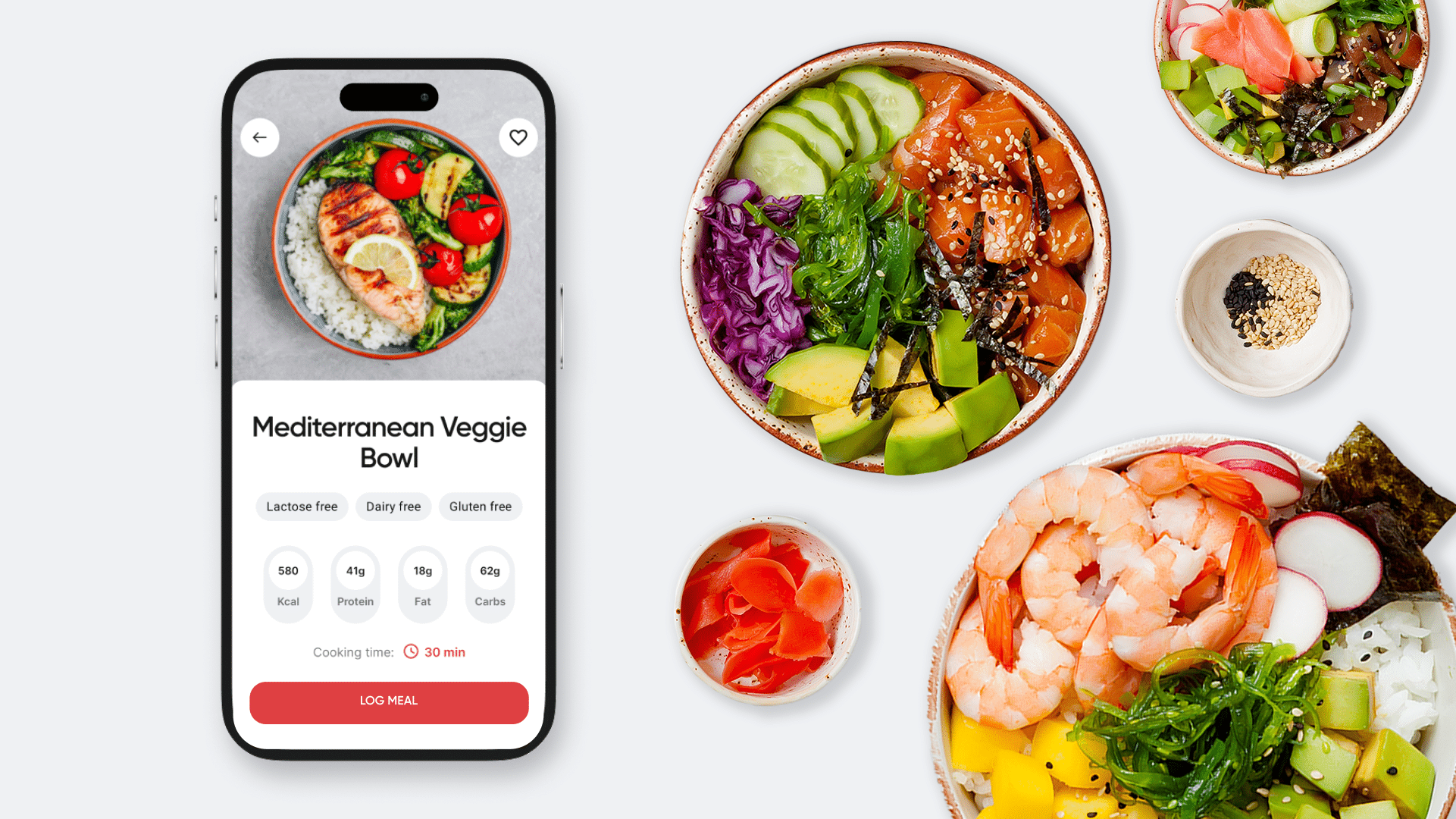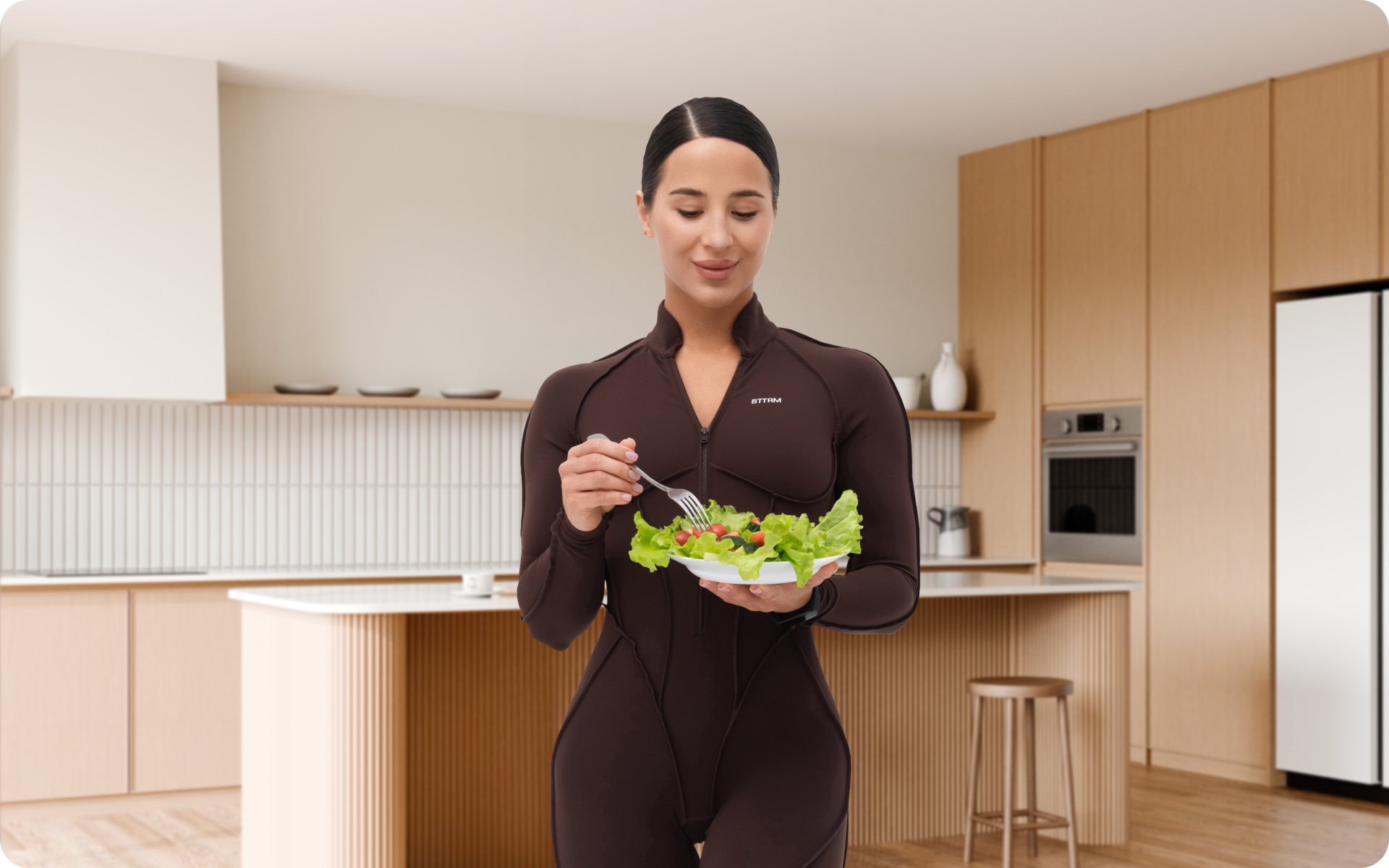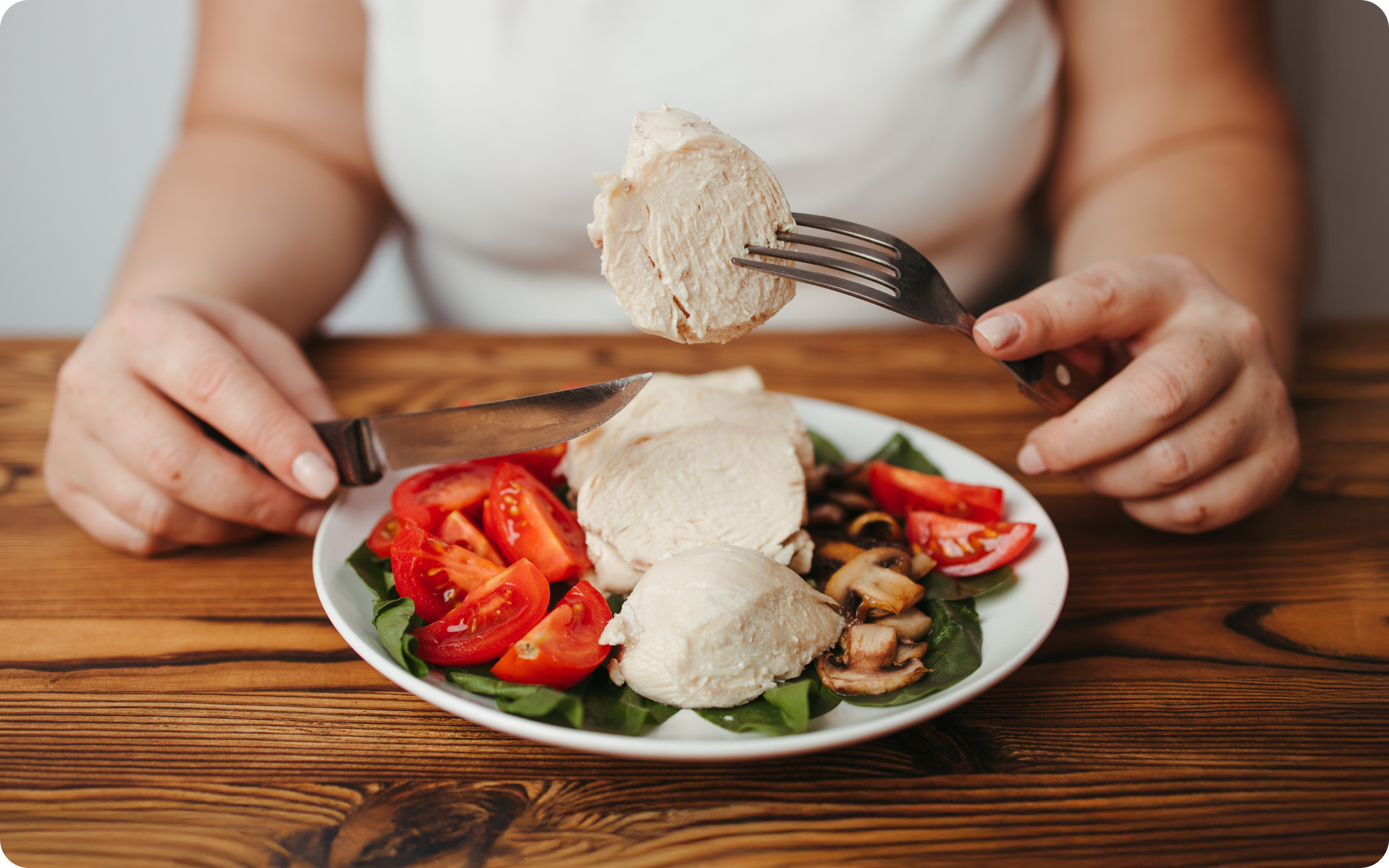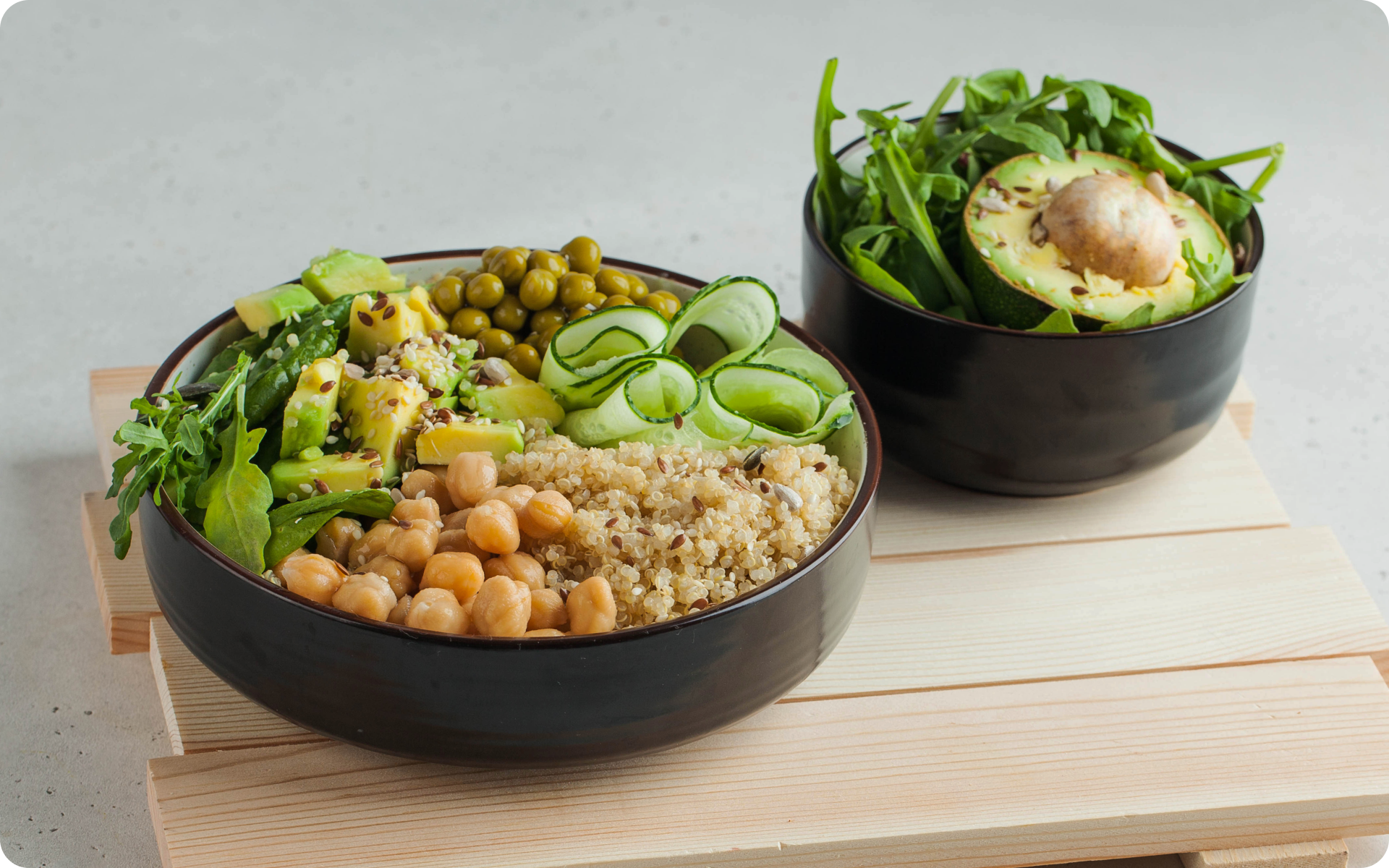In the ever-evolving landscape of health and fitness, where trends emerge and vanish like fleeting shadows, the quest for an optimal diet is a constant pursuit. Amidst the cacophony of conflicting advice and fad diets, a new contender has risen to prominence: the vertical diet. Touted by athletes, bodybuilders, and fitness enthusiasts alike, this diet stands out due to its simplicity.
Originating from the mind of the renowned strength coach Stan Efferding (3), the vertical diet has garnered attention for its practicality and claims of effectiveness in achieving desired outcomes, whether it be muscle gain, fat loss, or improved athletic performance. But what exactly is the vertical diet? And why has it captured the imagination of so many people in the fitness community?
What Is the Vertical Diet?
At its core, the vertical diet revolves around two main food groups: red meat and white rice. Firstly, we have red meat, which serves as the cornerstone of the diet. Red meat is rich in nutrients such as protein, iron, zinc, and B vitamins, providing some of the building blocks that your body needs to thrive (4). Next on the menu is white rice, the unsung hero of carbohydrates. While it may not have the same trendy reputation as quinoa or farro, white rice offers a host of benefits for athletes and fitness enthusiasts. With its fast-digesting nature and minimal fiber content, white rice provides a quick source of energy without weighing you down.
Are you looking to maximize your intermittent fasting results? We look at whether 20-hour intermittent fasting is worth the challenge. Find out more.
However, the vertical diet doesn’t stop there. In addition to its two main foods, it emphasizes the importance of micronutrients and gut health. This is where a variety of colorful fruits and vegetables come into play, providing a rainbow of vitamins, minerals, and antioxidants to support overall health and well-being.
And let’s not forget about supplementation. While the vertical diet prioritizes whole foods whenever possible, it recognizes that a little extra support is sometimes required. From vitamin D to magnesium to omega-3 fatty acids, targeted supplements can help fill in the nutritional gaps.
Here’s the beauty of the vertical diet: followers say that it’s not about following a rigid set of rules or restrictions. Instead, it’s about finding what works best for you and your body. Whether you’re a competitive athlete who is striving for peak performance or you’re simply looking to improve your fitness, the vertical diet may be something for you to consider.
Read More: Different Types of Diets: The Lowdown on the Most Talked-About Weight Loss Strategies
What Can You Eat on the Vertical Diet?
So, you’re ready to embark on the journey of the vertical diet, but you’re wondering what’s on the menu. We’ve got a comprehensive guide to the delicious delights awaiting you.
1. Red Meat
- Beef: Steaks, ground beef, beef liver, and lean cuts such as sirloin are all fair game.
- Bison: Lean and flavorful, bison offers a nutritious alternative to traditional beef (6).
- Lamb: Whether it’s chops, shanks, or ground lamb, this protein-packed meat adds variety to your diet.
2. White Rice
- Basmati Rice: Fragrant and fluffy, basmati rice is a popular choice due to its distinct flavor and texture.
- Jasmine Rice: With its slightly sticky consistency, jasmine rice is perfect for pairing with saucy dishes.
- Sushi Rice: Short-grain and slightly sticky, sushi rice is ideal for rolling up your favorite Asian creations.
Whether you’re looking to simply pep up your fitness routine, jazz up your diet with mouth-watering low-calorie recipes or want to get your act together and significantly drop that number on your scale – BetterMe app has got you covered! Improve your body and revamp your life with us!
3. Fruits and Vegetables
- Spinach: Packed with iron and other essential nutrients, spinach makes a nutritious addition to salads, smoothies, and stir-fries.
- Blueberries: Bursting with antioxidants, blueberries are a sweet and tangy treat that is perfect for snacking or adding to your morning meal.
- Sweet Potatoes: Rich in vitamins and fiber, sweet potatoes are a versatile ingredient that can be roasted, mashed, or baked to perfection.
- Bell Peppers: Vibrant and crunchy, bell peppers are loaded with vitamin C and make a colorful addition to salads, fajitas, and stir-fries.
- Carrots: Crunchy and sweet, carrots are rich in beta-carotene and make a satisfying snack when paired with hummus or guacamole.
4. Dairy and Eggs
- Eggs: Whether scrambled, poached, or fried, eggs are a nutritional powerhouse packed with protein, vitamins, and minerals.
- Greek Yogurt: Creamy and tangy, Greek yogurt is high in protein and makes a delicious base for smoothies, parfaits, and dips.
- Cheese: From cheddar to feta to parmesan, cheese adds flavor and richness to a variety of dishes. Just be mindful of portion sizes to keep your calorie intake in check.
5. Seafood
- Salmon: Rich in omega-3 fatty acids, salmon is a heart-healthy option that can be grilled, baked, or broiled.
- Shrimp: Low in calories and high in protein, shrimp is a versatile seafood option that can be cooked quickly and pairs well with a variety of flavors.
6. Supplements
- Vitamin D: This is essential for bone health and immune function and can help ensure you’re getting an adequate intake, particularly if you spend limited time in the sun.
- Magnesium: Known as the relaxation mineral, magnesium plays a key role in muscle function and can help support recovery and relaxation.
- Omega-3 Fatty Acids: They are found in fish oil supplements and are beneficial for heart health, brain function, and inflammation management.
7. Hydration
- Water: The ultimate thirst-quencher, water is essential for staying hydrated and supporting overall health and well-being. You should aim to drink at least 8-10 glasses daily, or more if you’re active or live in a hot climate.
What to Avoid on the Diet
While this eating plan provides a clear roadmap to optimal health and performance, it’s equally important to know what you should avoid. Let’s take a look at the key foods and ingredients to steer clear of when following the vertical diet:
- Ultra-Processed Foods: Bid farewell to the aisles of packaged snacks and convenience meals. Ultra-processed foods are often loaded with sodium, unhealthy fats, and added sugars that can derail your process on the vertical diet. Instead, opt for more whole, nutrient-dense foods to fuel your body with the nutrients it craves.
- Added Sugar: Sugary foods and beverages such as candy, soda, and pastries are devoid of nutritional value and can contribute to weight gain. Stick to natural sources of sweetness, such as fruits, to satisfy your sweet tooth without the crash (7).
- Unhealthy Fats: Saturated fats are the bad guys of the fat world, lurking in fried foods, fatty and processed meats, and ultra-processed snacks. High-saturated fat diets raise LDL cholesterol levels and can also increase your risk of heart disease and other health issues. Keep your heart happy by limiting saturated fats and opting for healthier fats such as those that are found in avocados, nuts, and olive oil.
Does calisthenics burn fat? Explore the fat-burning potential of this strength training and optimize your workout routine.
- High-FODMAP Vegetables: These sneaky little carbohydrates can spell disaster for people with irritable bowel syndrome (IBS) or other digestive woes. The vertical diet eliminates high-FODMAP foods and focuses on what it claims are more easily digestible foods, but for most people, high-FODMAP foods are not a problem and are actually beneficial for the digestive system. While many fruits and vegetables are packed with FODMAPs (8), some of the biggest “offenders” include onion, garlic, broccoli, cauliflower, and cabbage. Even though the diet eliminates these, we suggest still including these healthy foods unless they are specifically a problem for you.
- Excessive Dairy: While dairy can be an excellent source of calcium and protein, it’s also a common trigger for digestive issues such as bloating and gas. If you find that dairy doesn’t agree with you, consider swapping it for alternatives such as almond milk, coconut yogurt, or lactose-free options.
- Excessive Alcohol: Alcohol can interfere with nutrient absorption, disrupt sleep patterns, and contribute to dehydration (9) – not exactly the recipe for success on the vertical diet. Save the cocktails for special occasions and opt for water, herbal tea, or sparkling water instead.
Read more: 7-Day Weight Loss Low-Carb Diet: Choose High-Protein, High-Fiber, or Ultra-Low-Carb
What Is the Vertical Diet Good for?
Firstly, let’s talk about energy. You know those days when you feel as if you’re dragging your feet through quicksand? With the vertical diet, you can kiss those energy slumps goodbye. Thanks to the diet’s focus on easily digestible carbs such as white rice, you’ll have a quick source of fuel to power your workouts and keep you going strong from sunrise to sunset (5).
And speaking of strength, let’s not forget about the muscle-building magic of red meat. Packed with protein, iron, and all sorts of good stuff, it’s like rocket fuel for your muscles. The diet also takes gut health into consideration, by including some fiber-rich fruits and vegetables to keep your digestive system humming along smoothly.
Are you wondering how to build strength with bodyweight exercises? Dive into our Calisthenics for Strength guide to learn effective techniques and routines.
Beyond this, the vertical diet may also be helpful for recovery. Whether you’re a weekend warrior or a hardcore athlete, proper recovery is the key to staying in the game. The diet’s focus on micronutrients and targeted supplementation helps ensure you’ve got everything you need to bounce back faster and stronger than ever before.
Pros and Cons
Advocates of the vertical diet believe that the framework may improve resistance training performance by manipulating different nutritional components to enhance it. Most diets fail due to excessive hunger or loss of energy, and the vertical diet is specifically designed to combat these pitfalls by limiting the amount of ultra-processed foods.
The downside of this approach is that the amount of food is limited and repetitive, which may even lead to nutrient deficiencies in the long term (1, 2).
In addition, the vertical diet emphasizes red meat intake. Therefore, it’s impossible for people who are vegetarian or vegan to follow it and it may end up being a bit higher in saturated fat than is optimal for heart health.
If you struggle to even flirt with the idea of giving up your favorite foods or working out till your legs give way – BetterMe app is here to breathe a fresh perspective into the way you view the weight loss process! Check out the app and experience the fun side of fitness and dieting with BetterMe!
What Are the Disadvantages of a Vertical Diet?
While the vertical diet has gained popularity due to its simplicity and effectiveness, as with any other nutritional approach, it’s not without its potential drawbacks. Here are some to consider:
- Limited Food Variety: The vertical diet emphasizes a relatively narrow range of foods, primarily focused on red meat and white rice. This limited variety may lead to boredom or feelings of restriction, making it challenging to stick to the diet in the long term (10).
- Potential Nutrient Deficiencies: While red meat and white rice provide important nutrients, too much reliance on these foods could result in deficiencies in certain vitamins, minerals, and other essential nutrients that are found in a diverse diet.
- Digestive Issues: Some individuals may experience digestive discomfort or intolerance to certain foods that are included in the vertical diet, such as red meat or white rice. This can manifest as bloating, gas, or other gastrointestinal issues, particularly if these foods are consumed in large quantities or if there are underlying sensitivities (11).
- Cost: Red meat, particularly high-quality sources such as grass-fed beef, can be expensive compared to other protein sources. In addition, adhering to the vertical diet may require purchasing specific supplements or specialty foods, increasing costs and making it less accessible for some individuals.
- Potential Health Risks: While red meat can be part of a healthy diet when it is consumed in moderation, excessive intake has been associated with an increased risk of certain health conditions such as cardiovascular disease and certain types of cancer. It’s important to balance red meat consumption with a variety of other nutrient-dense foods and consider individual health factors and dietary preferences (10).
- Lack of Research: While anecdotal evidence and testimonials suggest there are numerous benefits to the vertical diet, there’s limited research in support of its effectiveness and safety for extended periods.
FAQs
Is the vertical diet suitable for vegetarians or vegans?
The emphasis of the vertical diet on red meat makes it challenging for vegetarians or vegans to follow. However, individuals who are following a plant-based diet can adapt to some of the principles of the vertical diet by focusing on high-protein plant foods such as tofu, tempeh, legumes, and quinoa.
How can I avoid nutrient deficiencies on the vertical diet?
To avoid nutrient deficiencies, aim for variety in your food choices and consider incorporating a wide range of fruits, vegetables, and whole grains into your meals. In addition, targeted supplementation may be necessary to fill in any nutritional gaps. Talk to your healthcare provider or a registered dietitian for individualized recommendations.
Can I drink coffee or tea on the vertical diet?
Yes, coffee and tea can be consumed on the vertical diet, but it’s important to be mindful of added sugars or creamers that can contribute extra calories. Opt for black coffee or unsweetened tea for the best results.
Are cheat meals allowed on the vertical diet?
While occasional indulgences may be enjoyed in moderation, the vertical diet encourages consistency and adherence to its principles for optimal results. If you choose to enjoy a cheat meal, try to make mindful choices and balance it with healthier options throughout the week.
How can I make vertical diet meals more exciting?
Get creative with your vertical diet meals by experimenting with different herbs, spices, and cooking methods. Incorporate a variety of colorful fruits and vegetables to add flavor and nutritional variety to your plate.
Is the vertical diet safe for everyone?
While the vertical diet may be safe and effective for some people, it’s essential to consider individual health conditions and dietary preferences and consult a healthcare professional before you make any significant dietary changes. Those with specific medical conditions or nutritional needs may require personalized modifications or monitoring.
What do you eat for breakfast on a vertical diet?
For breakfast on the vertical diet, you can opt for a combination of protein and carbohydrates to fuel your day. Examples include eggs with white rice, Greek yogurt with berries, or a protein shake with banana and nut butter.
What meat is best on the vertical diet?
The vertical diet emphasizes lean cuts of red meat such as steak, ground beef, and bison. In addition, poultry such as chicken and turkey can be included, as can fish and other seafood.
Is bread allowed on the vertical diet?
Bread is typically not included in the vertical diet. It focuses primarily on white rice as its grain component.
Can you have snacks on the vertical diet?
Snacking can be incorporated into the vertical diet, but it’s important to choose nutrient-dense options that are aligned with the diet’s principles. Examples include nuts, fruits, Greek yogurt, and vegetables.
The Bottom Line
The vertical diet offers a simple, straightforward approach to nutrition, emphasizing certain whole foods, strategic supplementation, and simplicity. While it’s not without its potential drawbacks, many people claim to have found success in achieving their health and fitness goals by following its principles.
Ultimately, whether the vertical diet is right for you is dependent on your individual preferences, dietary needs, and lifestyle factors. It’s important to listen to your body, experiment with different approaches, and consult a healthcare professional or registered dietitian to determine the best path forward.
So, whether you’re scaling the nutritional mountain or just looking for a solid foundation to support your health journey, the vertical diet offers an option worth considering.
DISCLAIMER:
This article is intended for general informational purposes only and does not serve to address individual circumstances. It is not a substitute for professional advice or help and should not be relied on for making any kind of decision-making. Any action taken as a direct or indirect result of the information in this article is entirely at your own risk and is your sole responsibility.
BetterMe, its content staff, and its medical advisors accept no responsibility for inaccuracies, errors, misstatements, inconsistencies, or omissions and specifically disclaim any liability, loss or risk, personal, professional or otherwise, which may be incurred as a consequence, directly or indirectly, of the use and/or application of any content.
You should always seek the advice of your physician or other qualified health provider with any questions you may have regarding a medical condition or your specific situation. Never disregard professional medical advice or delay seeking it because of BetterMe content. If you suspect or think you may have a medical emergency, call your doctor.
SOURCES:
- A healthy gastrointestinal microbiome is dependent on dietary diversity, (2016, ncbi.nlm.nih.gov)
- Hunger, Food Cravings, and Diet Satisfaction are Related to Changes in Body Weight During a 6-Month Behavioral Weight Loss Intervention: The Beef WISE Study,(2018, ncbi.nlm.nih.gov)
- Stan Efferding, (2019, greatestphysiques.com)
- What Every Lifter Needs to Know About the Vertical Diet, (2019, bodybuilding.com)
- What Is The Vertical Diet? (2022, eatingwell.com)
- What Is The Vertical Diet? Benefits, Downsides, and Meal Plan (2023, healthline.com)
- What Is the Vertical Diet and How Does It Work? (2023, prevention.com)
- What You Need to Know About the Vertical Diet (2023, barbend.com)
- How Alcohol Affects You (studenthealth.ucsd.edu)
- The Vertical Diet: Pros And Cons (2024, blog.torokhtiy.com)
- How Does Red Meat Affect My Gut Health? (nutritioncare.com.au)









